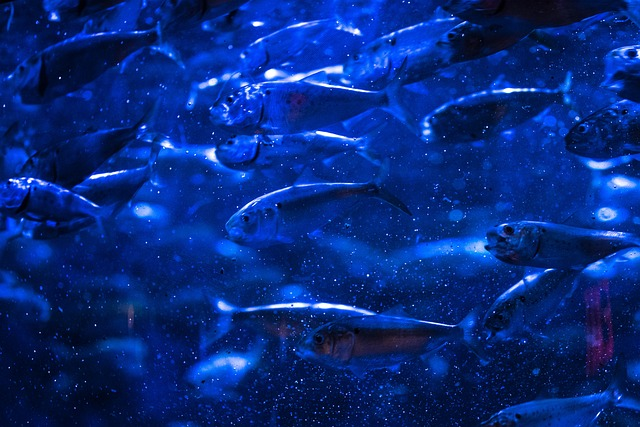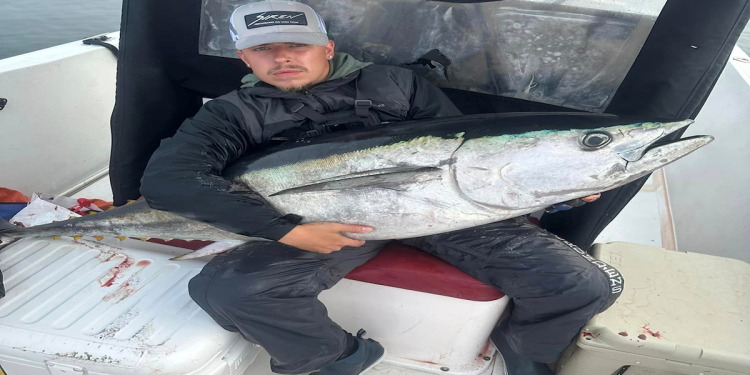Menhaden Fish
Did you know that a small, seemingly insignificant fish, the menhaden fish, plays a critical role in maintaining the health of our oceans and supporting commercial fishing industries? Enter the Atlantic menhaden (Brevoortia tyrannus), a keystone species that serves as both a filter feeder, purifying our waters, and a primary food source for a wide array of marine predators. Dive into the fascinating world of menhaden fish and discover their importance in the Chesapeake Bay ecosystem, the history and current practices of their fishery, and the challenges and opportunities that lie ahead for this remarkable fish.
Short Summary
- Menhaden are an important keystone species in the Chesapeake Bay, providing sustenance for larger predators and aiding in maintaining biodiversity.
- The Atlantic Menhaden Fishery is regulated by the Atlantic States Marine Fisheries Commission, harvesting menhaden for bait and reduction fisheries as well as omega-3 fatty acids used in supplements.
- Challenges such as overfishing and climate change must be addressed to ensure a sustainable future for this species through improved management practices.
The Marvelous Menhaden: A Keystone Species in the Chesapeake Bay

The Atlantic menhaden (Brevoortia tyrannus), a North American species of fish belonging to the herring family, is typically found in coastal and estuarine waters from Nova Scotia to northern Florida. As a keystone species in the Chesapeake Bay, the Atlantic menhaden Brevoortia tyrannus plays a crucial role in maintaining the health of the ecosystem. By acting as filter feeders, they help sustain water quality and serve as a nutrient-dense food source for many species inhabiting the bay, such as rockfish and osprey.
The decline of juvenile menhaden in the bay has direct repercussions on predators like striped bass and osprey, showcasing the significance of menhaden in the delicate balance of the Chesapeake Bay ecosystem. With this understanding of their importance, let’s take a closer look at the roles they fulfill in the ecosystem.
Menhaden’s Role as Filter Feeders
As filter feeders, menhaden are capable of filtering up to seven gallons of water per minute, predominantly consuming phytoplankton and zooplankton from the water column. By ingesting and filtering out plankton from the water, menhaden contribute to the maintenance of a healthy aquatic environment, providing a vital service that supports the entire ecosystem.
Their filtration process not only keeps the water clean but also allows them to serve as a significant source of sustenance for larger predators in the bay. In essence, menhaden are the unsung heroes of the Chesapeake Bay, working tirelessly to uphold the health of the waters that countless species call home.
Menhaden as Prey
Menhaden are a fundamental food source for a wide variety of marine animals, providing a critical connection between primary production and higher organisms in the food chain. They are subject to predation by diverse species, including birds such as ospreys and eagles, fish like striped bass, weakfish, and bluefish, and larger predators such as sharks, seals, dolphins, and whales.
This wide range of predator species relying on menhaden as a primary food source underscores their significance in maintaining the delicate balance of the ecosystem. By supporting the survival and well-being of these predators, menhaden play a crucial role in preserving the biodiversity and overall health of the Chesapeake Bay and its surrounding waters.
The Atlantic Menhaden Fishery: History and Current Practices

The Atlantic menhaden fishery, which comprises a reduction fishery and a bait fishery, has a lengthy history that highlights the economic importance of this species. In 2021, approximately 137 thousand metric tons were landed for reduction purposes, and commercial landings, including reduction, bait, bycatch, and episodic event landings, totaled 195,092 metric tons, marking a 6% increase in landings from 2020. The Omega Protein Corporation is the main harvester of menhaden on the East Coast, playing a significant role in the Atlantic menhaden harvest.
The Atlantic States Marine Fisheries Commission, which oversees the management of the menhaden fishery, determined in August 2021 that the stock is neither overfished nor is overfishing occurring, indicating that the current practices and regulations are helping to maintain healthy menhaden populations.
To gain a deeper understanding of these practices, let’s explore the bait and reduction fisheries, as well as the fishing techniques and regulations in place.
Bait and Reduction Fisheries
Menhaden are harvested for two primary purposes: to be used as bait in other fisheries and for reduction into products such as fish meal and fish oil. The bait fishery targets menhaden to be used as bait for other commercial and recreational fisheries, such as crabbing and lobster fishing. On the other hand, the reduction fishery processes menhaden into fish meal, which is used as animal feed, and fish oil, which has various applications in human nutrition and industrial uses.
Harvesting menhaden for bait and reduction purposes showcases the versatility and economic importance of this species. These commercial fisheries not only supply valuable resources for other industries but also support the livelihoods of countless individuals involved in commercial fishing.
Fishing Techniques and Regulations
Menhaden are primarily captured using purse seines and pound nets, with regulations in place to reduce bycatch and ensure sustainability. Limitations on the dimensions of purse seine nets, the number of nets that can be used, and the quantity of fish that can be harvested in a single haul help protect menhaden populations and other marine life that may be accidentally caught.
The prohibition of purse seines under the IC/SSF provision is another measure implemented to guarantee that menhaden are not overexploited and that their population remains viable. Through a combination of effective fishing techniques and strict regulations, the menhaden fishery is working towards a sustainable and prosperous future.
Menhaden Management and Conservation Efforts

Menhaden management and conservation efforts are guided by the Interstate Fishery Management Plan and ecological reference points, which help maintain healthy populations and protect the species’ role in the ecosystem. The Interstate Fishery Management Plan outlines a system for allocating catch limits and managing menhaden populations along the Atlantic coast, while ecological reference points provide a framework for managing menhaden based on their role in the ecosystem, rather than just their abundance.
Understanding the importance of menhaden in the food chain and the aquatic environment, these management and conservation efforts aim to preserve their population and ensure their continued role in the ecosystem.
Let’s delve deeper into the Interstate Fishery Management Plan and ecological reference points to better understand their impact on menhaden management.
Interstate Fishery Management Plan
The Interstate Fishery Management Plan, developed by the Atlantic States Marine Fisheries Commission, establishes a protocol for allocating catch limits and regulating menhaden populations along the Atlantic coast. States have the option of dividing their quotas into sectors under the IC/SSF provision. This allows individual sectors to enter the provision at different times. Additionally, the plan features a three-tiered system for allocating minimum allocations to the states.
The Board must be vigilant to ensure that the total allowable catch (TAC) of menhaden is not exceeded. If IC/SSF landings cause this limit to be exceeded, the Board must take action to modify permitted gear types and/or trip limits. This will ensure the sustainability of the menhaden populations. By implementing such strategies, the Interstate Fishery Management Plan plays a critical role in managing menhaden populations and securing their future.
Ecological Reference Points

Ecological reference points provide a framework for managing menhaden based on their role in the ecosystem, rather than just their abundance. The Atlantic States Marine Fisheries Commission’s adoption of ecological reference points for menhaden management allows them to consider menhaden’s role in the food chain and establish catch limits accordingly.
A significant distinction between the most recent stock assessment update and the ecological reference point assessment of Atlantic menhaden is that the former was a single-species assessment, not taking into account the present effects of overfishing other forage fish, such as Atlantic herring, which would likely modify the impacts of the menhaden fishery on predators like striped bass and bluefish.
By incorporating ecological reference points into menhaden management, a more comprehensive and sustainable approach can be achieved in preserving their populations and their ecosystem role.
Menhaden Products and Their Applications

Menhaden products, derived from the oil, scent, and gel of the fish, have a wide range of applications in human and animal nutrition, as well as in commercial fishing. Menhaden oil is used in everyday items such as lipstick, cookies, salad dressing, margarine, and fish oil supplements, while menhaden scent and gel are utilized as fishing bait. These products demonstrate the versatility and economic importance of menhaden in various industries.
Let’s explore the applications of menhaden products, particularly omega-3 fatty acids, and their use as bait for other fisheries, to further understand the significance of this small yet mighty fish.
Omega-3 Fatty Acids
Omega-3 fatty acids derived from menhaden are used in supplements and animal feed, promoting health and well-being for both humans and animals alike. Menhaden oil, which is rich in omega-3 fatty acids, is employed in various supplements due to its numerous health benefits.
Additionally, fish solubles, a byproduct of menhaden oil extraction, are used to augment fish meal and enhance nutrition in the aquaculture industry, further demonstrating the value of menhaden products in supporting healthy diets for humans and animals.
Bait for Other Fisheries
Menhaden products, especially those derived from adult menhaden, are routinely employed as bait for fisheries such as blue crab, lobster, striped bass, tuna, red drum, bluefish, redfish, cobia, sharks, weakfish, and mackerel. Their popularity as bait is due in part to their high oil content, which attracts a wide variety of fish species.
By providing a valuable resource for the commercial fishing industry, menhaden products support the livelihoods of countless individuals involved in various fisheries. Their use as bait not only demonstrates their economic importance but also highlights the interconnectedness of marine ecosystems.
The Future of Menhaden: Challenges and Opportunities

The future of Menhaden faces challenges such as overfishing and climate change, but opportunities for improved management and conservation efforts can help ensure the species’ continued role in the ecosystem. Overfishing remains the most significant challenge confronting the future of Menhaden, necessitating the implementation of effective management practices and regulations to address this issue.
Opportunities for enhanced management and conservation initiatives include the localized harvesting of 112 million pounds of menhaden annually from the Chesapeake Bay, the role of the Chesapeake Bay Foundation in menhaden conservation, and addressing climate change impacts on the species.
By tackling these challenges and capitalizing on opportunities, we can work towards a sustainable and thriving future for Menhaden and the ecosystems they support.
Addressing Overfishing
Addressing overfishing through better management practices and regulations can help maintain healthy menhaden populations. The Atlantic States Marine Fisheries Commission is undertaking a thorough multi-year study and monitoring of menhaden in the Chesapeake Bay region, applying the most advanced scientific practices. They have also adopted a new stock assessment and new overfishing definition to manage the species more effectively and ensure the preservation of its population.
By implementing these initiatives and continuing to improve management practices, we can work towards mitigating the effects of overfishing and securing a sustainable future for menhaden populations.
Climate Change Impacts
Understanding and mitigating the impacts of climate change on menhaden and their habitat is essential for the species’ long-term sustainability and function in the ecosystem. While the exact implications of climate change on menhaden remain uncertain, the potential effects on their habitat and food sources may have far-reaching consequences for the species and the ecosystems they support.
By investing in research and implementing adaptive management strategies, we can work to minimize the impacts of climate change on menhaden and ensure their continued role in the ecosystem for generations to come.
Summary
The Atlantic Menhaden plays a crucial role in the health of our oceans and the livelihoods of those involved in the fishing industry. As filter feeders and vital prey for numerous predator species, menhaden are an indispensable part of the Chesapeake Bay ecosystem. With ongoing efforts to improve management practices, address overfishing, and mitigate the impacts of climate change, we can work together to ensure a sustainable and thriving future for these remarkable fish and the ecosystems they support.
Frequently Asked Questions
Are menhaden fish good to eat?
Based on the evidence, it is clear that menhaden is not a popular food item. It has been used as fertilizer or for its oil since the 1800s and is generally considered too oily to be an appetizing food source.
Therefore, menhaden fish are not good to eat.
What is another name for menhaden fish?
Menhaden, also known as bunker or mossbunker, is a type of forage fish found along the Atlantic coast. They are important prey for larger predators like striped bass and bluefish.
Menhaden also have a large commercial fishery for food, oil, and fertilizer.
Are menhaden fish endangered?
It is clear from the data that menhaden fish are in danger of being endangered due to a sharp decline in their population over the past three decades. As a result, their reduced presence poses a threat to coastal and marine life, as well as the livelihoods of many businesses associated with them.
The decline in menhaden fish has been linked to overfishing, pollution, and climate change. To protect this species, it is important to take action to reduce the threats they face. This could include implementing regulations to limit regulations.
What animals eat menhaden fish?
Menhaden are a favorite snack for many creatures, including mackerel, tuna, bluefish, striped bass, gulls, terns, cormorants, and toothed whales.
These predators rely on menhaden for a rich, nutrient-packed meal.
What is the significance of menhaden in the Chesapeake Bay ecosystem?
Menhaden are of great significance to the Chesapeake Bay ecosystem, serving as a vital source of food for large predators and helping to keep water quality in the Bay healthy.
They are a keystone species, meaning that their presence is essential for the health of the entire ecosystem. They are filter feeders, consuming large amounts of plankton and other small organisms, which helps to keep the water clean. They are also a major food.





